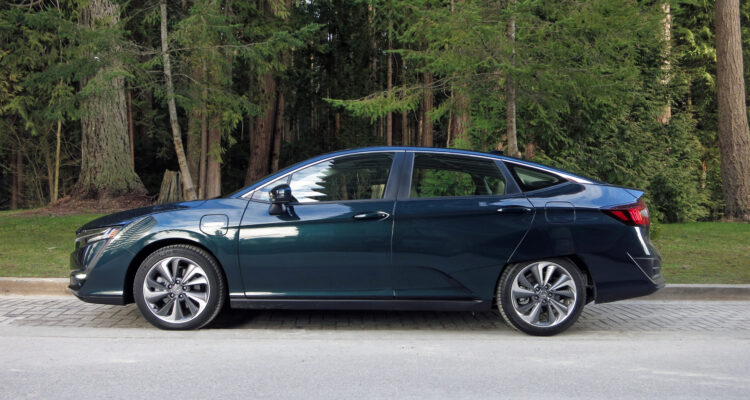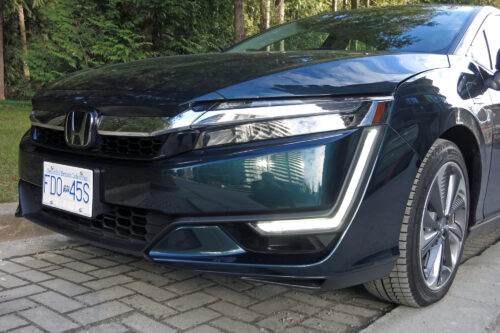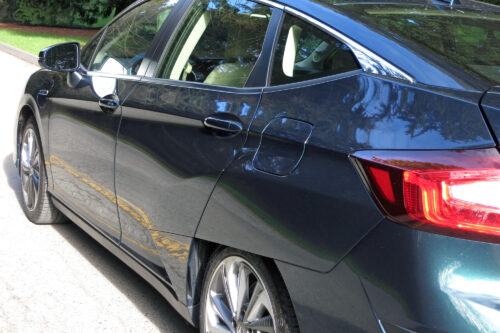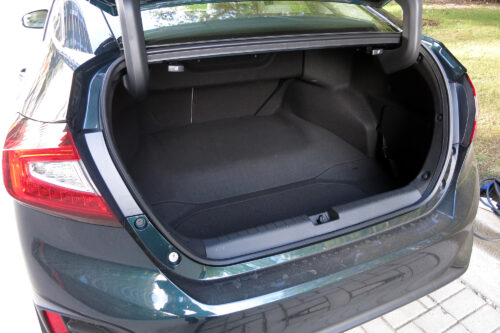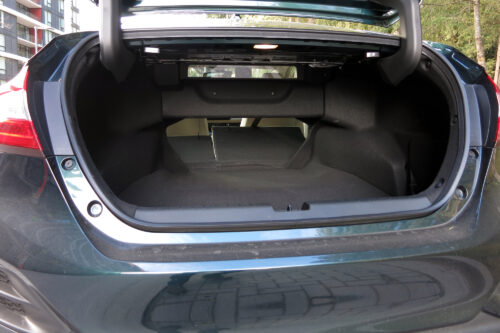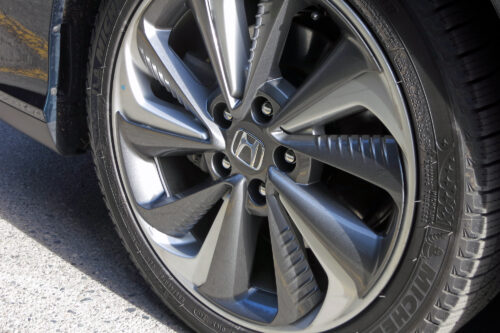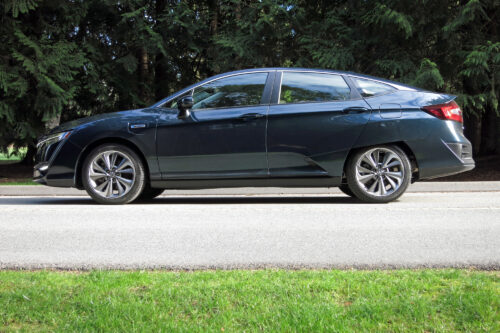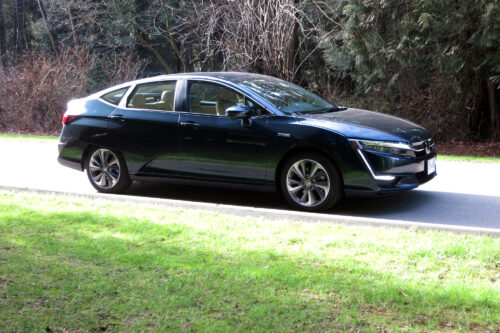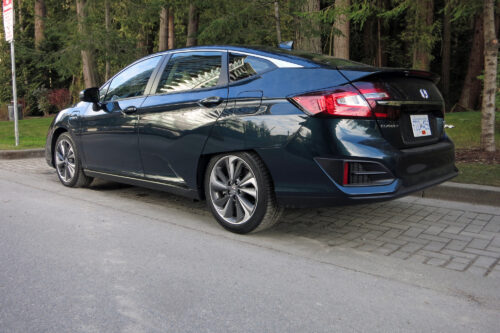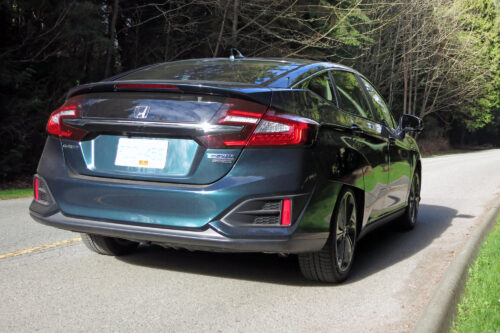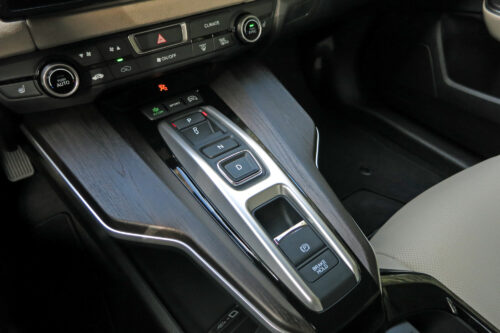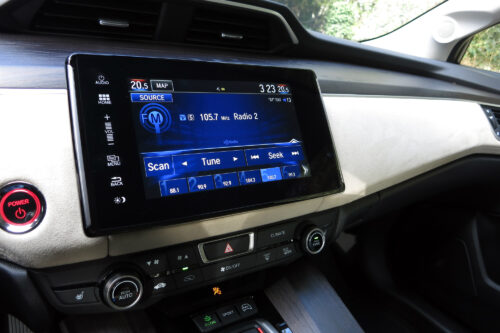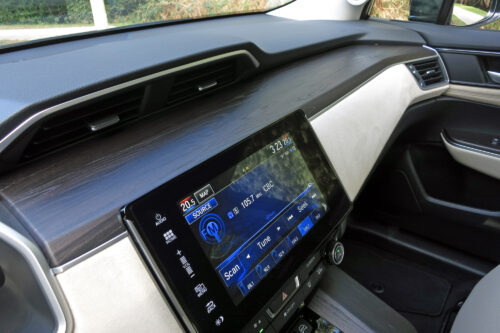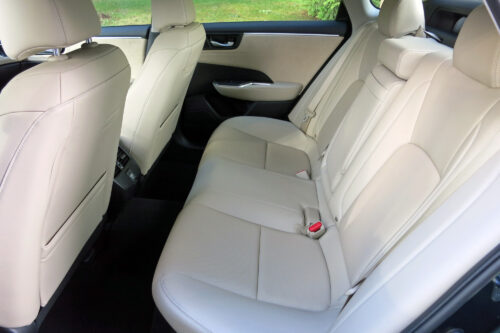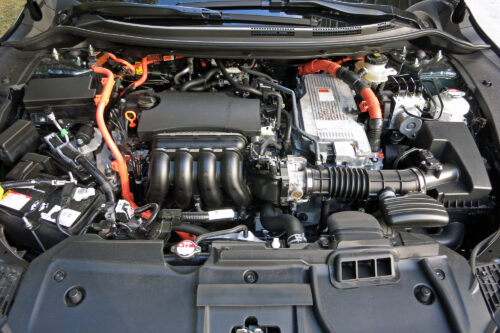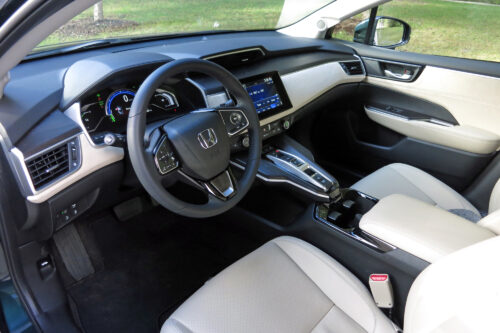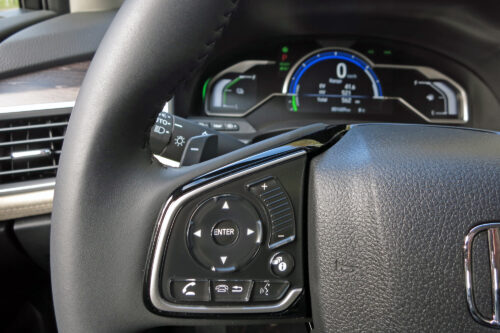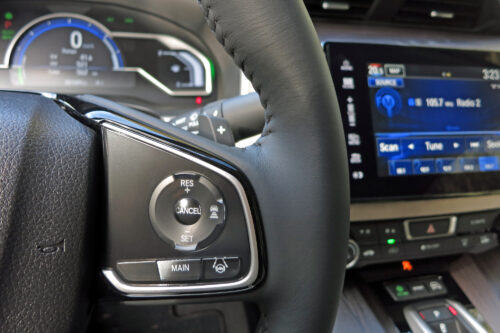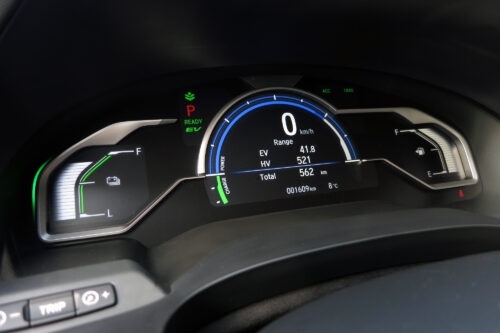Gas in Vancouver hit $1.50 yesterday. If I owned this week’s tester, I might not care that much, but my name’s not on the title. The Clarity is due back with Honda next week, so I frick’n care about gas prices a lot, as do most Canadians who feel hosed at the pumps.
Thanks to the Clarity’s ability to deliver upwards of 76 kilometres of electric-only driving, I was able to keep the oilman’s greasy fingers out of my wallet this week, and frankly, it felt good.
As a PHEV (plug-in hybrid electric vehicle), the Clarity blends the benefits of a fully-electric vehicle with the convenience and practicality of a gas vehicle. The combination of these power sources puts a total range on the clock of 547 kilometres when the battery is fully charged and the tank completely full.
I predict that this “best of both worlds” will drive a huge spike in sales as the motoring public wakeup to “having their cake and eating it too!” No longer is an electric car relegated to “second vehicle” status.
With PHEV technology, daily commutes can largely be handled by the Clarity’s electric-only range. Come the weekend, travel is unlimited provided the oilman appears every 500 kilometres or so.
PHEVs are generally too restrictive in size and the scope of their practicality for buyers seeking the attributes and capabilities of an all-wheel-drive crossover or SUV. Mitsubishi has addressed this with the release of the PHEV Outlander, which is a good start; no doubt other manufacturers will follow if demand builds.
Apart from the Outlander, these limitations make the existing selection of PHEV unsuitable for my garage at this point in their development. Nonetheless, the technology is moving rapidly in the right direction, and the Clarity is a fine example of this.
With a somewhat polarizing design, the Clarity is not a small car. In fact, it’s a spacious 4-door sedan with seating for five. It falls between the Honda CR-V and the full-size Honda Pilot in length.
It’s also a relatively upscale, very-well equipped vehicle available in either standard or Touring trim levels, the latter featuring leather seating, navigation, and the Honda-Link app with Remote Commands.
The vehicle is pulled along by its front wheels, powered by a 17kWh battery and a 1.5L DOHC Atkinson-cycle gas engine. Combined output is rated at 232 horsepower flowing through an e-continuously-variable transmission.
The Clarity’s performance is lively, and certainly well-suited to city driving. When full power is needed for quick getaways or passing slower vehicles, the gas engine will immediately fire-up and add some additional kick if the vehicle had been driving solely on electric power.
During my time behind the wheel, I had no problem driving through the city and undertaking short highway stints without the need for supplementary gas-fired grunt. When it becomes necessary for the engine to step-up, it does so quietly and with notably good refinement.
The overall Clarity driving experience is both pleasing and relaxing, if not a bit soul-crushing in spite of its Sport Mode. The car is remarkably quiet, well behaved, smooth riding, and predictable. It’s a great commuter car, but not a whip to bring about an ear-to-ear grin when the road allows.
But pulse-raising is not what the Clarity was designed or intended to do; it was meant for clean, economical driving that’s free of range anxiety, which it accomplishes remarkably well. Yet, there are a few foibles to this “car of the future,” and they reside within the driver’s reach.
The arrangement of buttons that control the transmission is an awkward, clumsy affair that fails to convey the certainty in gear selection that a conventional shifter does. I’m always double-checking that I’ve hit the “P” button when leaving the car.
Some things just work, and don’t need to be messed with, such as shift levers and proper audio controls, which the Clarity is also missing. There’s not even a volume knob, though there’s a steering-wheel mounted volume button.
I’m a knob guy. Don’t misinterpret that statement! I just prefer a rotary-knobs for volume, station, and source selection. Using the Clarity’s touchscreen for these adjustments frustrated me. Often multiple touches were needed before the screen reacted, eliciting words better left unprinted.
My frustrations aside, the Clarity is a vehicle deserving of much praise. It is operationally more refined than expected while delivering a quieter, more polished driving experience than expected. It also spoils occupants with plenty of leg and headroom, making it a realistic five-seater sedan.
Unfortunately, after a week of sticking it to the oilman, I’ll have to grovel back into a gas station and surrender my wallet to his greasy fingers. Seldom will Clarity owners endure that discomfort.
2018 Honda Clarity Touring
Price as tested (before taxes): $43,900.00
Configuration: PHEV front-wheel drive
Engine/transmission: 1.5L gas engine + 17kWh battery, e-continuously variable transmission
Power: 232 horsepower
Fuel-economy ratings (L/100km): combined gas/electric 2.1L, Hybrid mode 5.6L
Warranty (basic): 3 years / 60,000 km
Competitors: Chevrolet Volt, Ford Fusion Energi, Toyota Prius Plug-in
Related links:
Honda Canada
Driving.ca



